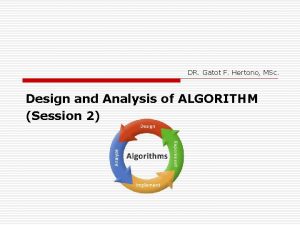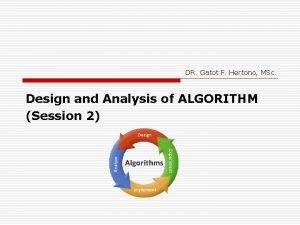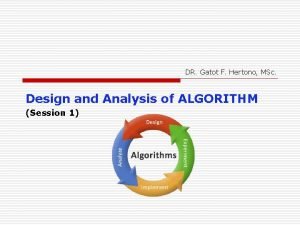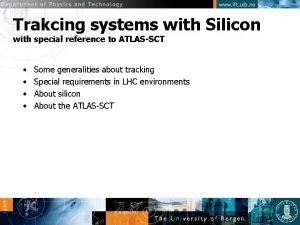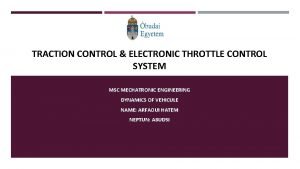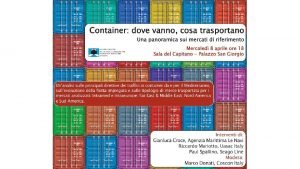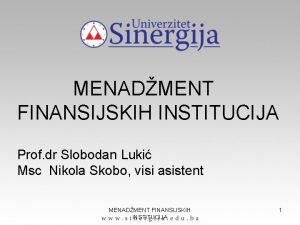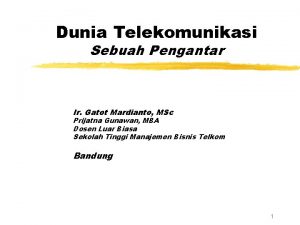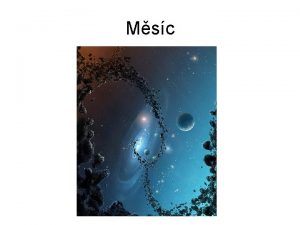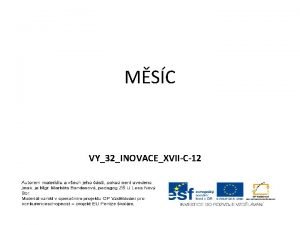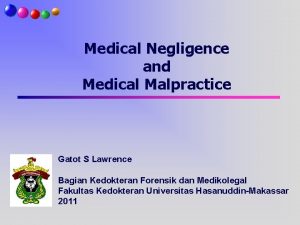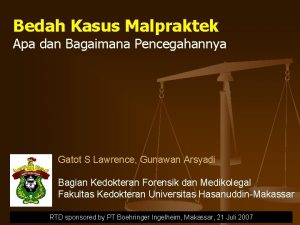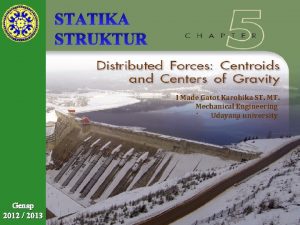DR Gatot F Hertono MSc Design and Analysis


















- Slides: 18

DR. Gatot F. Hertono, MSc. Design and Analysis of ALGORITHM (Session 2)

Our Machine Model: Assumptions Generic Random Access Machine (RAM) o Executes operations sequentially o Set of basic operations: n Arithmetic. Logical, Comparisons, Function calls o Simplifying assumption: all ops cost 1 unit Notes: n Eliminates dependence on the speed of our computer, otherwise impossible to verify and to compare

Running time • The running time depends on the input. Example: an already sorted sequence is easier to sort. • Major Simplifying Convention: Parameterize the running time by the size of the input. ØTA(n) = time of A on length n inputs • Generally, we seek upper bounds on the running time, to have a guarantee of performance.

Examples of Basic Operations Algorithm Input Types Basic Operations List Searching List with n elements Comparation List Sorting List with n elements Comparation Matrix Product n x n matrices Scalar Products Prime Factorisation n digit numbers Scalar Division Polynomial Evaluation n degree polynomial Scalar Products Tree Traversal Tree with n nodes Visiting a node Notes: The running time of an algorithm is determined by its input size n

Time Complexity The complexity of an algorithm is determined by the number of basic operations and how many time the algorithm computes those basic operations. Notes: The complexity analysis is machine independent. Time complexity of an algorithm will determine the running time depends on its input size, i. e. the time complexity is a function of input size. Time Complexity maps “input size” to “time” T(n) executed.

Purpose o To estimate how long a program will run. o To estimate the largest input that can reasonably be given to the program. o To compare the efficiency of different algorithms. o To help focus on the parts of code that are executed the largest number of times. o To choose an algorithm for an application.

Time Complexity: an example

Best, Worst and Average Case Sometimes, given two different inputs with a same size, an algorithm can have different running time. Example: Suppose a sorting algorithm has some inputs with a same size but different order: In ascending order -Input 1: 10, 5, 23, 45, 1, 100 -Input 2: 1, 5, 10, 23, 45, 100 -Input 3: 100, 45, 23, 10, 5, 1 Average case Best case Worst case Do those inputs give the same running time?

Best, Worst and Average Case (cont. )

Best, Worst and Average Cases (cont. ) Let In denote a set of all input with size n of an algorithm and (i) denote the number of primitive operations of the corresponding algorithm when given input i. Mathematically, we can define: Best-case Complexity: is a function B(n) = min{ (i) i In } Worst-case Complexity: is a function W(n) = max{ (i) i In } Average-case Complexity: is a function A(n) = where p(i) is the probability of i occurs as an input of an algorithm.

Example of insertion sort 8 2 4 9 3 6 2 8 4 9 3 6 2 4 8 9 3 6 2 3 4 8 9 6 2 3 4 6 8 9 done

Running Time of Insertion Sort Insertion_Sort(A) 1 for j 2 to length(A) Cost c 1 Times n 2 key A(j) c 2 n-1 3 i j-1 c 3 n-1 4 while i > 0 and A(i) > key c 4 5 A(i+1) A(i) c 5 6 i i– 1 c 6 7 A(i+1) key c 7 n-1 n = length(A) tj = number of while loop execution for a certain value j

Insertion Sort: an analysis Best case: in an ordered list (i. e tj = 1, for j = 2, …, n) Worst case: in a reverse ordered list (i. e tj = j, for j = 2, …, n)

Time Complexity: a comparison

Machine-independent time What is insertion sort’s worst-case time? BIG IDEAS: • Ignore machine dependent constants, otherwise impossible to verify and to compare algorithms • Look at growth of T(n) as n → ∞. “Asymptotic Analysis”

Analysis o Simplifications n Ignore actual and abstract statement costs n Order of growth is the interesting measure: o Highest-order term is what counts n Remember, we are doing asymptotic analysis n As the input size grows larger it is the high order term that dominates

Assignment 1 o In order to show that an algorithm is not unique, design two different algorithms of a specific problem. o Design an algorithm and show its time complexity to compute a product of two n x n matrices (how is the time complexity in the best and worst cases? )

Performance & Speed
 Gatot f hertono
Gatot f hertono Gatot f hertono
Gatot f hertono Gatot f hertono
Gatot f hertono Principles of input design
Principles of input design Msc construction law
Msc construction law Bsc and msc in telecom
Bsc and msc in telecom Msc finance and banking tor vergata
Msc finance and banking tor vergata User interface design in system analysis and design
User interface design in system analysis and design Dialogue design in system analysis and design
Dialogue design in system analysis and design What are structured analysis tools
What are structured analysis tools Fact finding techniques in sad
Fact finding techniques in sad Technical feasibility in system analysis and design
Technical feasibility in system analysis and design Trakcing msc
Trakcing msc Rolf isermann
Rolf isermann Hapag qq
Hapag qq What is an msc?
What is an msc? Almacenes msc
Almacenes msc Grenoble ecole de management msc finance
Grenoble ecole de management msc finance Prof msc
Prof msc
